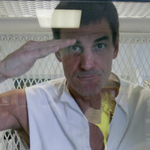
In 2015, DPIC’s Battle Scars report brought worldwide attention to the issue of military veterans on death row. DPIC found approximately 300 veterans incarcerated under a sentence of death, representing at least 10% of death row, and many more who had been executed. Since that report, research and understanding about Post-Traumatic Stress Disorder (PTSD), traumatic brain injury (TBI), substance use disorders, and mental illness among veterans has only grown. A 2023 survey of members of the Wounded Warrior Project found that 76% of servicemembers who incurred a mental or physical injury in service since 9/11 had experienced PTSD, and a Veterans Affairs study found that veterans with PTSD are 60% more likely to have criminal justice system involvement than those without. However, the legal system has delivered inconsistent results regarding the impact of military service on the lives of people charged with capital crimes. While several veterans were granted relief in capital cases this year, states also executed five veterans in a four-month period from October 2022 to February 2023. For several former servicemembers executed in recent years, a jury never heard about the extent or effects of the trauma they experienced fighting in the American Armed Forces.
The Supreme Court recognized the importance of an individual’s military service in assessing culpability for a capital crime in Porter v. McCollum (2009), when it ruled that George Porter’s attorney had been ineffective for not presenting mitigating evidence of his service in the Korean War and subsequent challenges. In addition to symptoms of anxiety, depression, and PTSD from his time in war, a neuropsychologist found that Mr. Porter “suffered from brain damage that could manifest in impulsive, violent behavior.” The Court described Mr. Porter as a veteran “both wounded and decorated” whose “combat service unfortunately left him a traumatized, changed man,” and noted that “our Nation has a long tradition of according leniency to veterans in recognition of their service, especially for those who fought on the front lines as Porter did.”

However, recent cases suggest that the same failures Mr. Porter experienced at trial continue: not all veterans have their service considered meaningfully before the legal system imposes punishment. Thomas Loden Jr. (pictured), executed by Mississippi on December 14, 2022, embodied many of the struggles faced by veterans returning to civilian life. As a child, Mr. Loden was physically and sexually abused by family members and a church leader, and had attempted suicide several times before he joined the Marine Corps at age 18. However, he flourished in the military, earning the rank of gunnery sergeant and receiving awards including the Navy and Marine Corps Commendation Medal and the Good Conduct Medal. His commanding officer described him as “a poster Marine” and “the hardest charging Marine I have ever had work for me.” Mr. Loden served in the Gulf War, where he experienced many attacks on his unit and witnessed the death of a close friend. On his return, he fought nightmares, flashbacks, and anxiety, becoming a heavy alcohol and drug user even as he balanced a prestigious job on the Marine Corps’ Anti-Terrorism Security Team. He raped and murdered 16-year-old Leesa Gray while under the influence, then tried to commit suicide in the aftermath, carving “I’m sorry” into his chest. He pleaded guilty and waived a jury for trial and sentencing, so a factfinder never heard the evidence of his childhood and military trauma.
Similarly, a jury never heard adequate information about the service-related trauma of former Marines John Hummel, who was executed by Texas in 2021, or John Thuesen, who currently sits on Texas death row. A court recommended a new sentencing trial for Mr. Thuesen in 2015, ruling that the Veterans Administration did not properly treat his PTSD and his lawyer had failed to explain the meaning of Mr. Thuesen’s PTSD or its effect on his behavior. However, the Texas Court of Criminal Appeals declined to grant a new trial, and Mr. Thuesen remains on death row.
Three other men executed during the four-month period last winter had also served in the Marines, while a fourth had served in the Army and Army Reserves. Oklahoma executed former Marines Benjamin Cole and Richard Fairchild in the fall of 2022, both of whom were convicted of the murders of young children under their care and showed significant signs of mental illness. Texas executed former Marine John Henry Ramirez on October 5, 2022. On February 7, 2023, Missouri executed Leonard Taylor, who served in the Army and Reserves for six years as a light-wheel mechanic and generator repair expert, and whose father had also been a veteran. Mr. Taylor consistently maintained his innocence in the murder of his girlfriend Angela Rowe and her three children, and evidence showed that he was in another state during the time period the medical examiner originally stated the crime occurred. By the time of the trial, the medical examiner had changed his assessment to fit a window where Mr. Taylor was still in town; pathology experts contested this second finding. Mr. Taylor became involved in the drug trade after his military service and believed that a rival may have targeted Ms. Rowe and her family due to his activities.
However, several veterans have won recent relief in death penalty cases or had the death penalty taken off the table in part due to their military service. On October 19, 2023, Frederick Hopkins was sentenced to life without parole after pleading guilty in the murder of two police officers. Mr. Hopkins, a 79-year-old Vietnam veteran, had set up a “sniper’s nest” in his home in South Carolina and fired at police officers approaching to serve a search warrant for his son. Mr. Hopkins had received medals for marksmanship during his service before he was medically discharged in 1977. He had seen doctors many times over the years with symptoms of PTSD, and one opined that Mr. Hopkins showed early signs of dementia before the killings. Mr. Hopkins said that during the shootout he was responding to memories of a Vietnam firefight in 1970 where 27 men in his unit perished. “While [PTSD and dementia] can in no way ameliorate the tragedy of his actions I firmly believe they provide a genesis for the explosion which resulted in the death of these two officers,” said David Ferrier, an investigator who works with veterans and reviewed Mr. Hopkins’ records. Victims’ families and survivors of the shooting supported a life sentence, citing Mr. Hopkins’ advanced age, and prosecutors promised not to seek the death penalty after Mr. Hopkins agreed to plead guilty.

A federal judge ruled on September 28 that Scott Panetti (pictured), whose high-profile case was taken up by the Supreme Court in 2007 to clarify the law for defendants with mental illness, could not be executed due to mental incompetence. Mr. Panetti was honorably discharged from the Navy after receiving several mental health diagnoses. He entered the care of the Veterans Administration, under which he was hospitalized numerous times and diagnosed with conditions including schizophrenia and schizoaffective disorder. His service appeared to influence his own perception of his crime, the murder of his in-laws: he dressed in combat fatigues during the killing and testified that the murder was committed by an alter ego named “Sarge.” Representing himself at trial, his rambling testimony contained numerous stories from his time in the Navy. The court ruled that Mr. Panetti “lack[s] a rational understanding of the connection between his actions and his death sentence” and is therefore “not sane enough to be executed.”
The growing research into the experiences of servicemembers has contributed to legal innovations such as Veterans Treatment Courts (VTCs), which prioritize “diversion” sentences that direct veterans to mental health and substance abuse care instead of prison. However, VTCs are typically used for lower-level crimes or first offenses, and no clear framework has developed for assessing the role of military service in serious violent offenses. A recent report from the Council on Criminal Justice suggests a nuanced interplay of childhood, military, and post-military experiences contribute to criminal offenses by veterans. In the report, Dr. Ugur Orak found that “military service members are more likely than their civilian counterparts to have socioeconomic and family characteristics, ACEs [Adverse Childhood Experiences], and personality traits that, without targeted intervention and support systems, may increase their risk of criminal justice involvement.” Those risks are then compounded by physical and mental trauma from military service and further exacerbated if the servicemember cannot access care. Dr. Orak found that “approximately one-third of veterans with mental health and/or substance use disorders do not receive treatment.”
In addition to mental health conditions like PTSD, military service also exposes soldiers to new technologies or battle tactics that may affect neurological health, including executive function and impulse control. Historically, the physical effects of such technologies have only become clear after their widespread use. An estimated 3 million U.S. soldiers were exposed to the herbicide Agent Orange, used as a chemical weapon during the Vietnam War, and an estimated 175,000 veterans of the Gulf War developed symptoms from exposure to nerve gas and oil well fires (dubbed “Gulf War Illness”). Both conditions have been shown to cause widespread physical and psychological problems, and DPIC’s Battle Scars report describes a number of veterans sentenced to death who were exposed. A recent New York Times investigation found that a long-range artillery strategy used in 2016 and 2017 against ISIS in Syria may have caused significant brain and organ injury, resulting in symptoms such as severe headaches, hallucinations, personality changes, and increased violent and suicidal tendencies. Soldiers fired tens of thousands of blasts powerful enough to launch 100-pound rounds 15 miles away, releasing an immense and repeated force that pummeled the soldiers’ bodies. Many of the veterans on those units have committed or attempted suicide since returning home, and at least one was tried for murder. Lance Corporal Brady Zipoy was found not guilty by reason of mental illness in 2021 for breaking into a home and fatally shooting a stranger during a psychotic episode, with the court considering his military service in the decision.

The use of capital punishment for members of the military also arises in the context of military courts, which operate separately from state and federal courts and only exercise jurisdiction over current servicemembers. The military has not conducted an execution since 1961. Four men currently sit on military death row, including Sergeant Timothy Hennis, who was acquitted of murder in North Carolina and recalled to active duty from retirement specifically so that a military court could try him and sentence him to death without violating double jeopardy. In September, the U.S. Court of Appeals for the Armed Forces affirmed the death sentence of Major Nidal Hasan (pictured), convicted of killing 13 people on the base at Fort Hood, Texas in 2009. Mr. Hasan had served as an Army psychiatrist counseling soldiers with PTSD, which acquaintances and experts believed contributed to the deterioration of his mental state as he faced an imminent deployment to Afghanistan. President Joe Biden, who promised to work to eliminate the federal death penalty during his campaign, would have to personally sign Mr. Hasan’s execution warrant for it to occur.
Dave Philipps, A Secret War, Strange New Wounds, and Silence from the Pentagon, New York Times, November 5, 2023; Ugur Orak, From Service to Sentencing: Unraveling Risk Factors for Criminal Justice Involvement Among U.S. Veterans, Council on Criminal Justice, October 23, 2023; Jeffrey Collins, Vet Gets Life Sentence for Sniper’s Ambush of Police that Killed 2 and Wounded 5, Associated Press/Military.com, October 20, 2023; Zamone Perez, Death penalty upheld for soldier who killed 13 in base shooting, Army Times, September 11, 2023; John Elflein, Share of U.S. veterans with the WWP experiencing PTSD since 9/11, 2017 – 2022, Statista, August 21, 2023; Katie Moore, Leonard Taylor is set to be executed by Missouri in 9 Days. Will an innocent man die?, Kansas City Star, January 29, 2023; Mina Corpuz, Marine executed 22 years after rape and murder of teen, Mississippi Today, December 14, 2022; Mina Corpuz, Marine’s troubled life set to end with execution, Mississippi Today, December 14, 2022; Elizabeth Bruenig, Death of a Sinner, The Atlantic, October 17, 2022; Linda Truitt, NIJ’s Courts Research: Examining Alternatives to Incarceration for Veterans and Other Policy Innovation, November 1, 2021; Man accused in killing acquitted by reason of mental illness, Associated Press, March 25, 2021; Mike Richman, Study: Veterans with PTSD more likely to have justice-system involvement than those without, U.S. Department of Veterans Affairs: Office of Research and Development, August 4, 2020; AJ Vicens, An Ex-Marine Killed Two People in Cold Blood. Should His PTSD Keep Him From Death Row?, MotherJones, May 2, 2016; Porter v. McCollum, 558 U.S. 30 (2009).